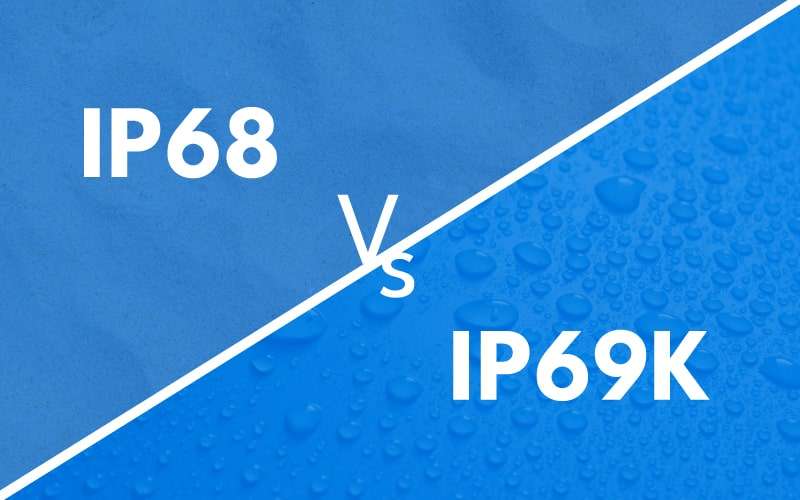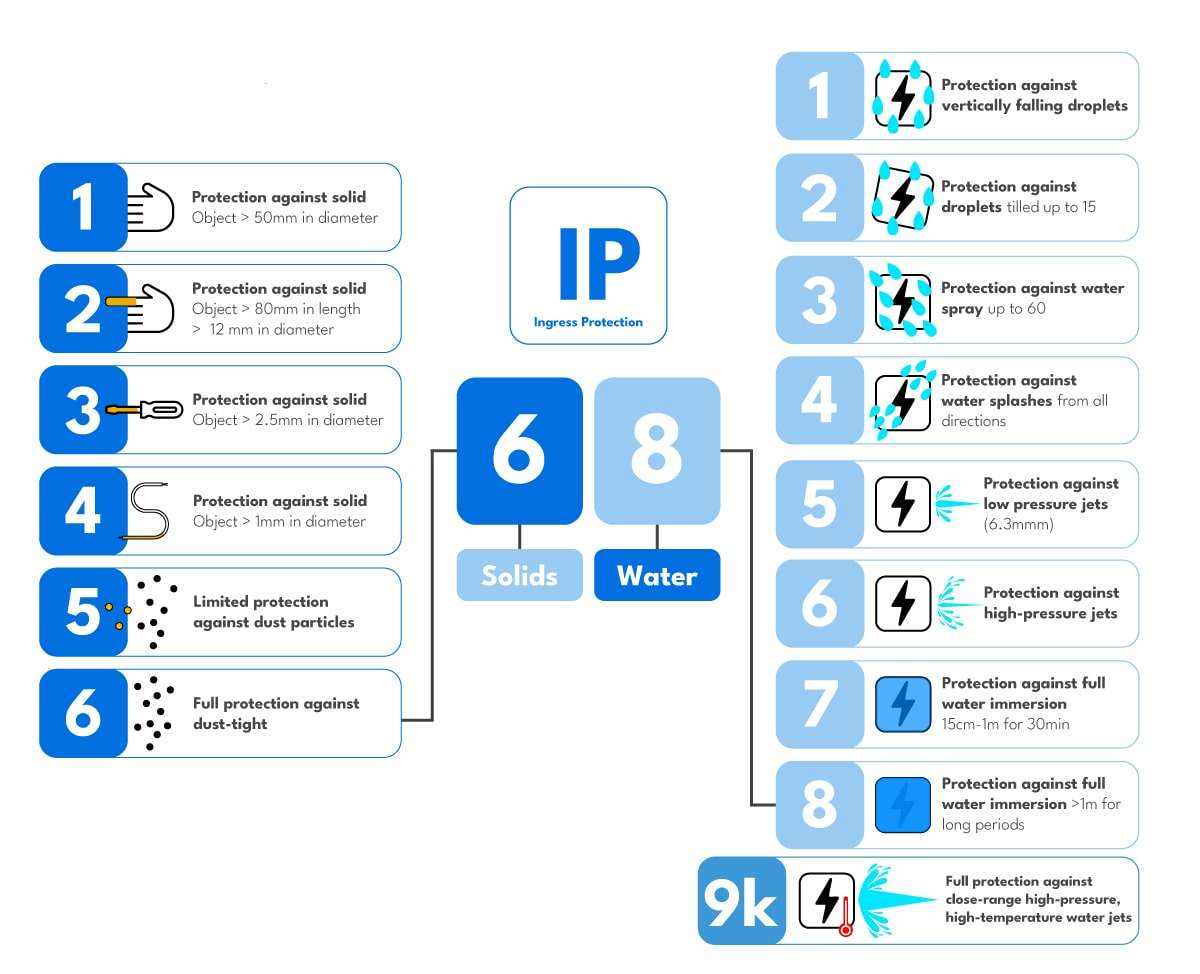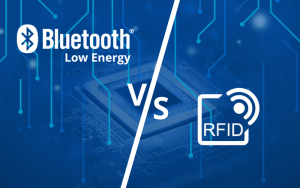
IP68, IP69K, IP55 do you really know the difference? In industrial environments, it’s important to ensure that equipment and tools are sufficiently robust and resistant to withstand conditions of use that can sometimes be extreme. Whether on construction sites, in the transport sector or in Industry 4.0, equipment is regularly exposed to dust and water.
As a manufacturer of industrial IoT sensors, our products are generally used in complex environments, requiring high levels of waterproofing. You’ve probably already heard of IP protection ratings, but which one should you choose?
To help you choose the right IoT sensor for your needs, our experts explain the different levels of IP protection, and focus on the little-known IP69K rating.
What is an IP protection rating?
The IP (Ingress Protection) index is an international standard established by the International Electrotechnical Commission (IEC) to define the level of protection to solids (e.g. dust) and liquids of an electronic product. This protection index is also compatible with European standard EN 60529.
Each electronic product is marked with a code starting with “IP” and followed by 2 digits, the first of which corresponds to the level of impermeability to solids and the second to liquids.
What level of waterproofing do you need?
As previously explained, the solids sealing level is represented by the first digit, which can range from 1 to 6. Level 1 protection against foreign bodies protects a product against intrusion (or contact) with objects larger than 50mm. Level 6, on the other hand, ensures that your product will be totally dust-tight via an air vacuum.
Protection against liquid intrusion is represented by the second number, from 1 to 8. Level 1 ensures that your product will be protected against the intrusion of vertically falling drops of water for 10 minutes. Level 8 offers protection against prolonged immersion to a depth of over 1m. Please note, however, that IP protection level certifies equipment resistance to clear water only. It is therefore totally inadvisable to immerse your equipment in seawater, water containing chemicals or even soapy water.

To ensure that the product you buy is well suited to your specific use, it’s important to refer to the product data sheets provided by the manufacturer. For example, an IP65-rated smartphone will not withstand immersion in water, but will be completely dustproof.
IP69K, what are we talking about?
If the product is regularly exposed to high-pressure washing, it must be subjected to other types of test, to ensure that it remains watertight under these conditions of use. To meet this need, ISO has created a 9th level of protection dedicated to high-pressure cleaning, known as IP69K (DIN 40050-9).
It is important to note, however, that an IP69K protection class is NOT superior to an IP68 protection level.
IP69K is NOT superior to IP68, as the test conditions are different.
The fact that the figure is higher, in this case, does not mean that the level of protection is. Indeed, these are different test classifications.
In the case of IP68 protection, the test involves prolonged immersion of the product in water to a depth of over 1m. The IP69K water-resistance test is designed to ensure that the product can withstand high-pressure and high-temperature washdowns.
In practical terms, the product under test is placed on a table which rotates every 12 seconds while a nozzle mounted 15cm apart sterilizes the device with water heated to 80°C (176°F) and pressurized to 80 to -100 bar at a flow rate of 14 to 16 liters per minute. The test is performed with the nozzle positioned at angles of 0°, 30°, 60° and 90°.

In which case should you choose an IP69K-certified sensor?
In the vast majority of cases, IP68 certification is more than sufficient, but IP69K certification has been developed for extreme use cases. If you plan to deploy electronic sensors in an environment where they will regularly have to undergo high-pressure cleaning, then IP69K certification will be essential. This standard was created primarily to meet the needs of the food transport and storage, which require regular high-pressure cleaning.
In brief, the IP rating gives you the level of protection against foreign objects and water. In simple terms, the higher the number, the more waterproof and resistant the product.
But beware, the IP69K class is the exception that proves the rule! We’re talking here about different test conditions.
To be sure of a sensor’s certification level, you can refer to its technical documentation, but if in doubt about the level of waterproofing required for your environment, call on our experts.





